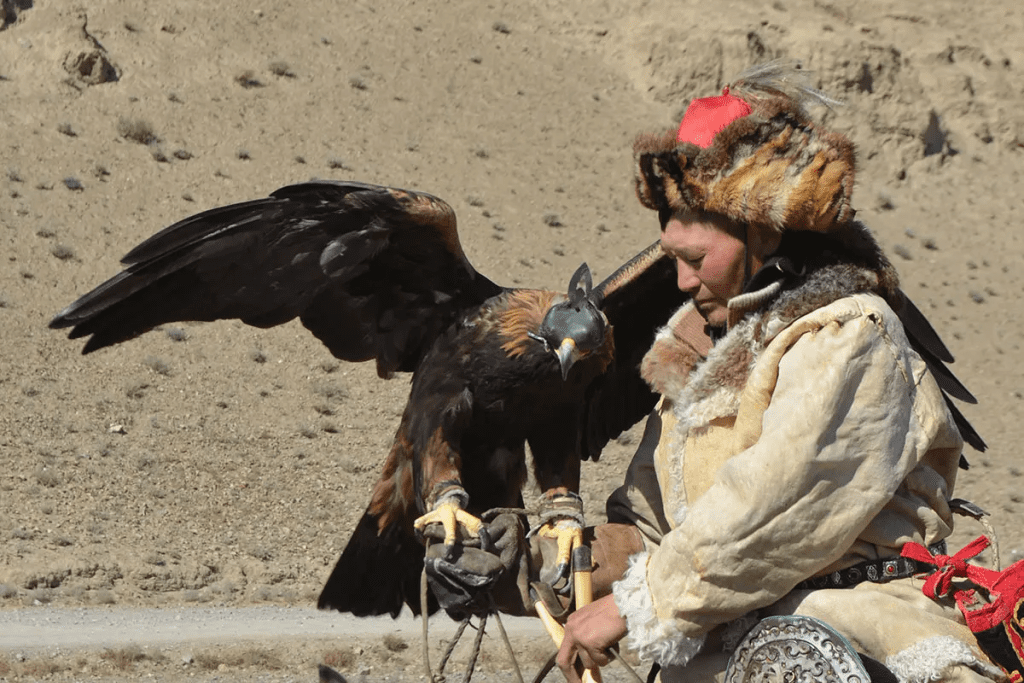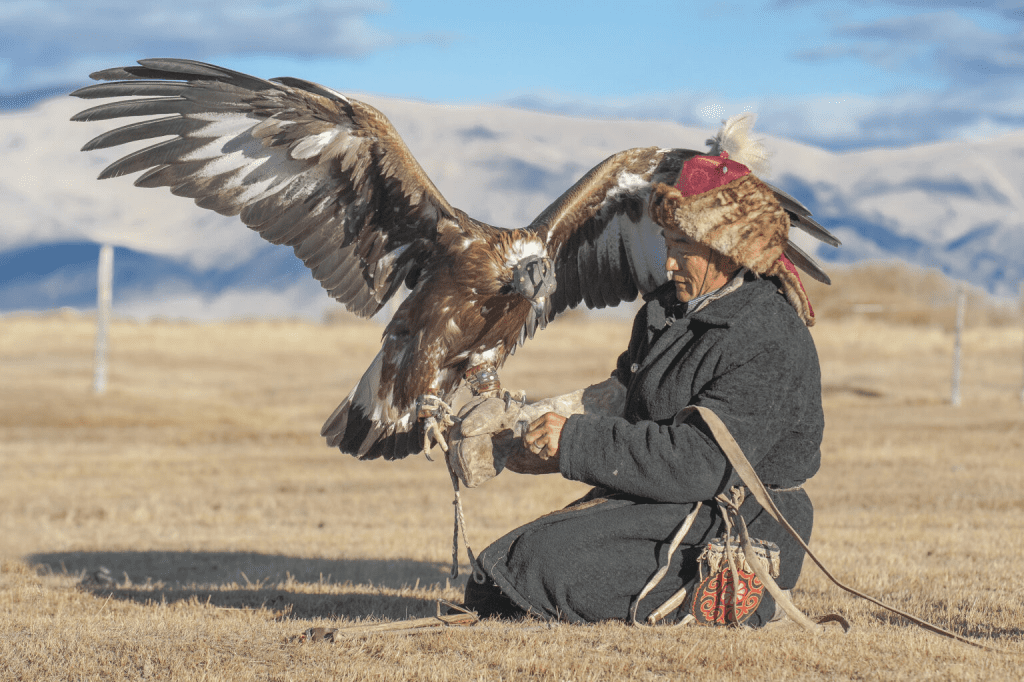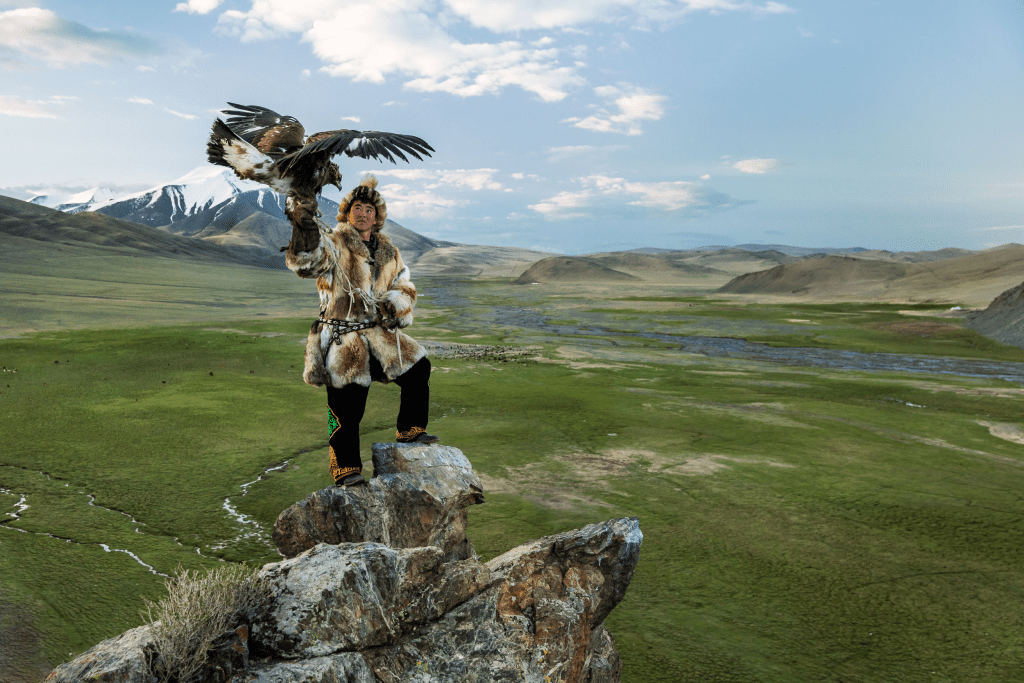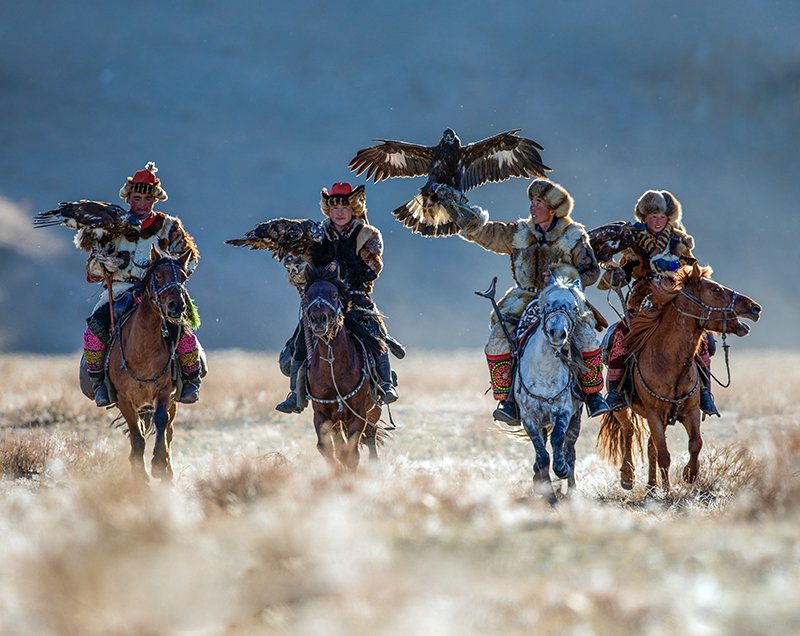In the remote, rugged mountains of western Mongolia, where snow blankets the steppes and the winds howl across jagged peaks, an ancient tradition still takes flight. Here, a rare group of Kazakh eagle hunters, known as berkutchi, preserve one of the world’s oldest and most breathtaking forms of falconry hunting with golden eagles.
This tradition, passed down from father to son for generations, is more than a skill or a sport. It is a way of life, deeply woven into the identity of Mongolia’s Kazakh minority. With each winter hunt and every call into the sky, the berkutchi honor their ancestors and the powerful creatures they partner with in the wild.

Why Golden Eagles?
The bird at the heart of this tradition is the female golden eagle an apex predator of the sky with a wingspan that can stretch over seven feet. Females are favored because they are larger, more aggressive, and better suited to take down large prey such as foxes and even wolves.
Trained from a young age, the eagle becomes a hunter’s trusted companion. She learns to respond to voice commands, track movement across great distances, and dive at prey with deadly precision. The bond between eagle and berkutchi is one built on mutual respect, trust, and skill and it requires years of dedicated training.

Eagles are typically taken from the nest as chicks, raised by hand, and trained to hunt over time. Remarkably, after about a decade of service, they are released back into the wild often during a ceremonial farewell, giving them the chance to mate and live out their remaining years in nature. This cycle speaks to the deep reverence hunters have for the birds they work with.
Video:
The Last Eagle Hunters Of Mongolia | Foreign Correspondent
A Harsh Land, A Living Tradition
Life on the Mongolian steppe is tough. Winters are long and severe, with temperatures dropping well below zero. For centuries, the Kazakh people survived in this unforgiving environment by developing close relationships with the animals around them not only for food and clothing, but also for protection.
Hunting with eagles was not merely a cultural expression it was a practical means of survival. The birds helped control predators like wolves, whose attacks on livestock could devastate a family’s livelihood. Over time, the practice evolved into an art form one that merged necessity with elegance and discipline.
Today, while modern life creeps into even the most remote corners of the world, the eagle hunters of Mongolia remain committed to keeping their heritage alive.

The Golden Eagle Festival: Celebrating a Culture in Flight
Each October, the highlands of Bayan-Ölgii Province come alive with color, music, and soaring wings for the Golden Eagle Festival. Hunters, dressed in traditional fur-lined garments, arrive on horseback with their majestic eagles perched on thick leather gloves.
This annual gathering is more than a spectacle it’s a celebration of identity, pride, and resilience. Competitions test the strength, speed, and obedience of the birds, while hunters demonstrate their skills in timed challenges. Judges evaluate not just the eagle’s ability to spot and strike, but also the harmony between hunter and bird.
Video:
Golden Eagle Festival
Beyond the competitions, the festival offers a rare glimpse into Kazakh culture, featuring music, dance, horse games, and storytelling. For many young boys watching the hunters compete, it’s an initiation into a tradition they hope to inherit one day.
Preserving the Past, Embracing the Future
While the number of berkutchi has dwindled over the years, efforts are underway to preserve and pass down this endangered tradition. Some eagle hunters have begun to train girls, breaking old taboos and introducing the art to a new generation. Others welcome travelers and documentarians, sharing their stories with the outside world to keep the legacy alive.
In a world racing toward modernity, the eagle hunters of Mongolia remind us that not all progress means forgetting the past. Their way of life speaks to a timeless relationship between humans and nature, rooted in respect, balance, and survival.

Conclusion: Wings of Heritage
The art of eagle hunting is more than a dramatic image of man and bird silhouetted against snowy peaks. It is a testament to human ingenuity, endurance, and cultural pride. In western Mongolia, each flight of a golden eagle tells a story of fathers and sons, tradition and transition, wild nature and the quiet strength of those who live within it.
As long as the eagles fly and the hunters ride, this story will continue etched not in stone, but in the wind.


